You may already know that modern smart devices like phones and door locks are equipped with fingerprint, facial recognition, and even iris recognition features. These are unique identifiers on the human body that are believed to be distinctive and non-replicable.
But what could be more unique than the idea that some toilet manufacturers are now looking to equip their products with anal fingerprint recognition? You heard that right: their idea is to install a camera underneath the toilet so that when you sit down, the toilet will recognize you.

A camera installed underneath will recognize you.
But ultimately, what is the purpose of creating a smart toilet with anal recognition functionality? Will you have to pay to unlock such a toilet? Or purchase a monthly subscription like you do for YouTube, Spotify, and Netflix?
It turns out that the idea of creating toilets with anal fingerprint recognition could go far beyond what an average person might imagine. Let’s explore.
The Era of Smart Toilets
In a world of IoT (Internet of Things), everything needs to be smart. Toilets are no exception. Many manufacturers are currently advertising toilets with heating, automatic washing, or programmable service features.
However, according to a group of engineers at Stanford Medical School, these are not truly smart toilets. In a project launched in 2020, a research team led by Dr. Seung-min Park, a urologist, invented a toilet equipped with a camera and machine learning algorithms.
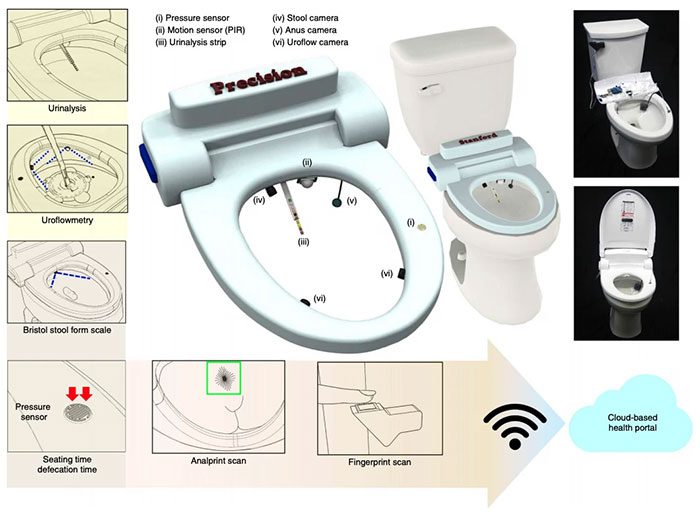
Toilet equipped with a camera and machine learning algorithms.
The purpose of this technology is to calculate “flow rate and urine volume using computer vision”, the researchers said. This camera and algorithm can also detect the color of urine and feces, using a scale known as the Bristol Stool Chart.
It can inform you of potential health issues you may be experiencing, ranging from urinary problems, constipation, hemorrhoids, to signs of blood in the stool indicating cancer.
Additionally, the toilet that Dr. Park and the Stanford team are developing features a special capability: anal recognition.
“Using human waste and the anus as a biometric identifier is not a new topic. Since the last century, the great artist Salvador Dalí noted that each anus has about 35-37 different wrinkles, which are as unique as fingerprints”, Dr. Park stated.
When asked why this peculiar feature was included, the research team explained that it is part of security technology, aimed at preventing confusion and data mix-ups during users’ toilet experiences.

The toilet can inform you of potential health issues you may be experiencing.
Dr. Park and Stanford Medical School are not the only ones with ideas for smart toilets. In 2021, a group of engineers at Duke University also unveiled a prototype of a smart toilet equipped with a camera, biochemical sensors, and even artificial intelligence (AI).
This toilet also has analysis functions to detect the presence of blood and specific proteins in human waste. This information can be used to provide early warnings to users about health risks, including Covid-19. In case you didn’t know, the SARS-CoV-2 virus can also be detected in feces.
Casana, a health startup, is developing a special toilet seat that includes a range of functions such as measuring blood pressure, heart rate, and blood oxygen levels.
This reminds us of Google, which registered a patent for a smart toilet seat with cardiovascular monitoring capabilities back in 2015.
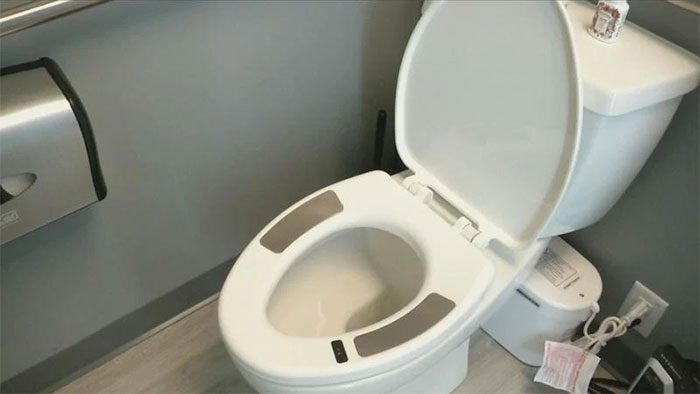
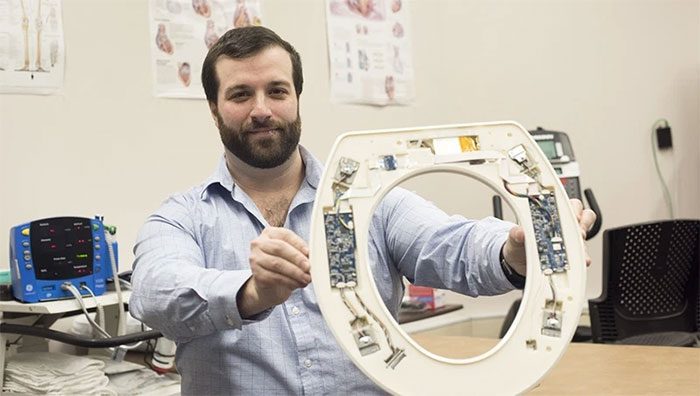
Smart toilet seat.
Toi Labs, another company, shares this idea as they develop toilet seats capable of weighing and collecting biometric information. The seat can analyze the volume, clarity, density, and color of feces and urine to alert users to urinary, reproductive, and digestive health issues.
Overall, it is evident that the trend of smartening toilets and restrooms is being pursued by many manufacturers and tech companies.
Are you ready to sit on a toilet that takes pictures of you?
The researchers and developers of smart toilets are aware of this issue. Not everyone is comfortable sitting on a toilet with a camera pointed at them, especially in such a sensitive context and location.
Dr. Park and the Stanford team conducted a survey with 300 people, and one-third said they would not be comfortable with the smart toilet they are developing. The camera capturing anal images is only part of the issue; another concern is that users are aware their data is being collected.
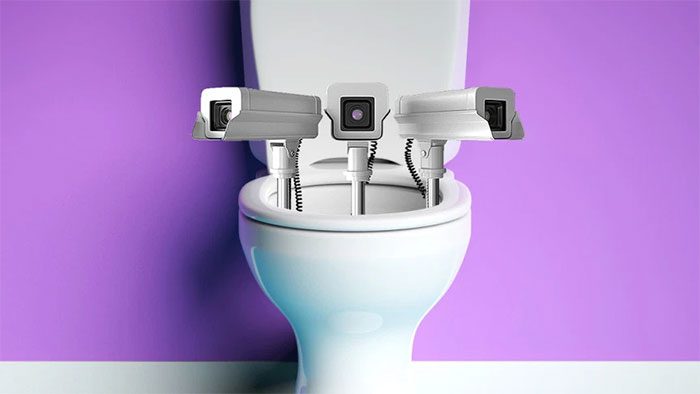
The camera capturing anal images is only part of the issue…
Feces and urine contain more personal data than you might think. They not only reveal your health status but can also indicate whether you are using drugs or stimulants.
Additionally, insurance companies may want to collect this type of information to advertise or offer preferential contracts for healthy individuals. Public restrooms may also choose to install such smart toilets.
Overall, as toilets become smarter, they are no longer the private spaces you might imagine. “Whenever you measure something on your body, the boundaries of privacy are erased,” Phil Booth, coordinator of the MedConfidential health record protection service, stated.
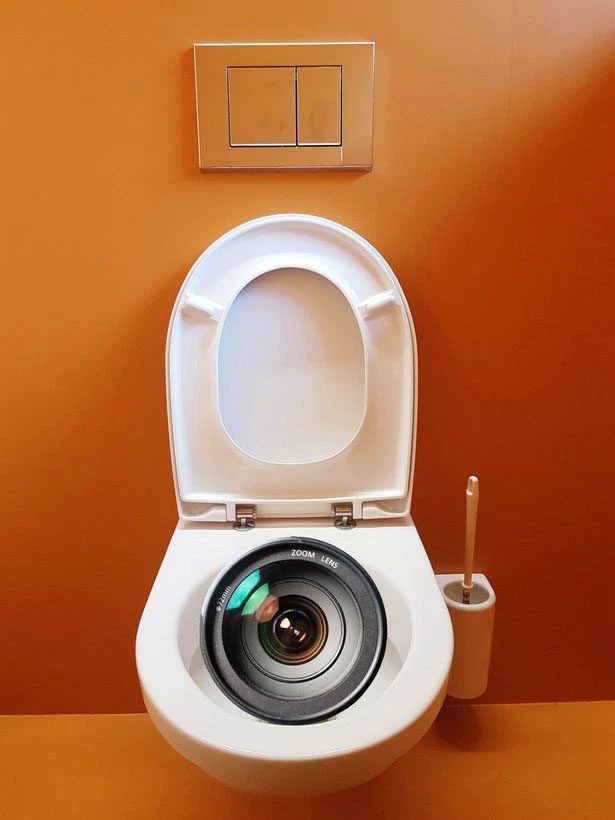
…another issue is that users are aware their data is being collected.
For their part, Dr. Park and the Stanford scientists state they have a solution for this privacy issue. According to them, all data collected by their smart toilet will be sent to a cloud storage system rather than being stored in the toilet.
“All collected information in the form of images and videos is clearly labeled and detailed according to each specific user. Then, they are stored in the cloud via wireless connection so that scientists can easily download and conduct research,” Dr. Park said.
“We are always cautious with the data obtained from users. The process of sending images, data, and sensitive information is encrypted end-to-end to ensure security.
We also use a special algorithm to classify anal image data, capable of automatically processing data without human intervention.”
















































